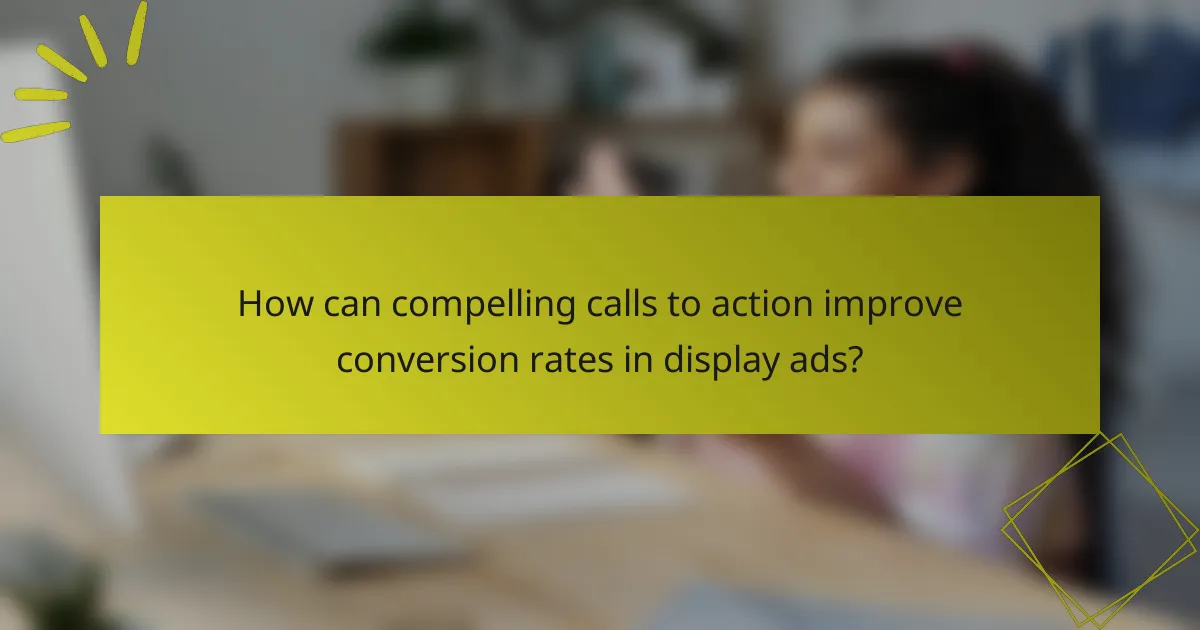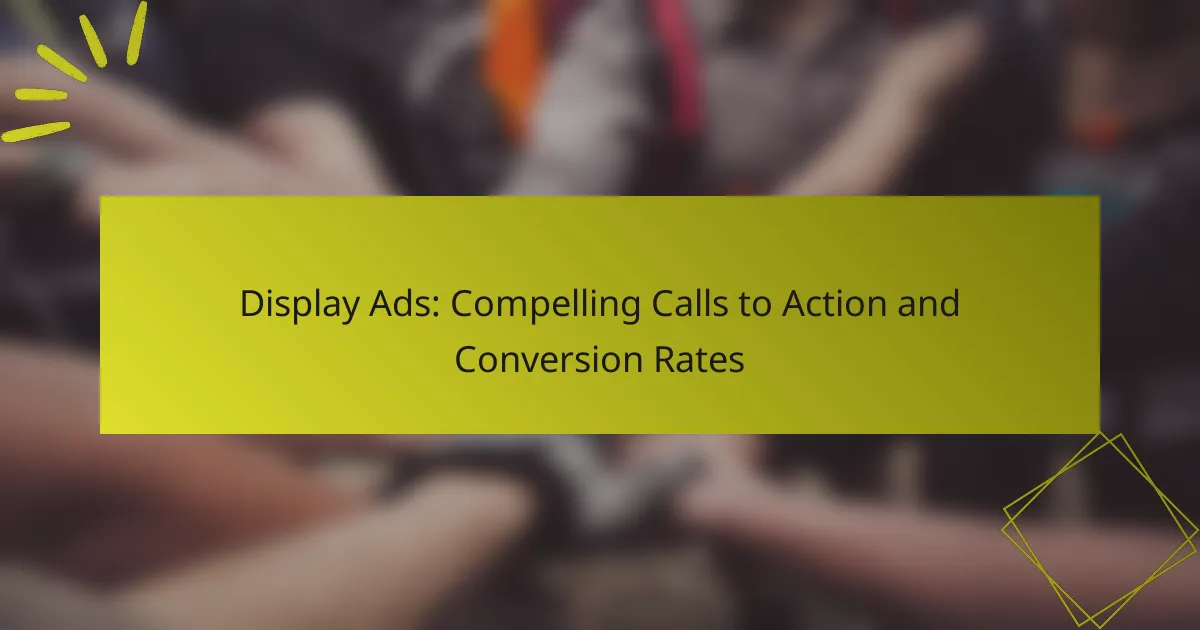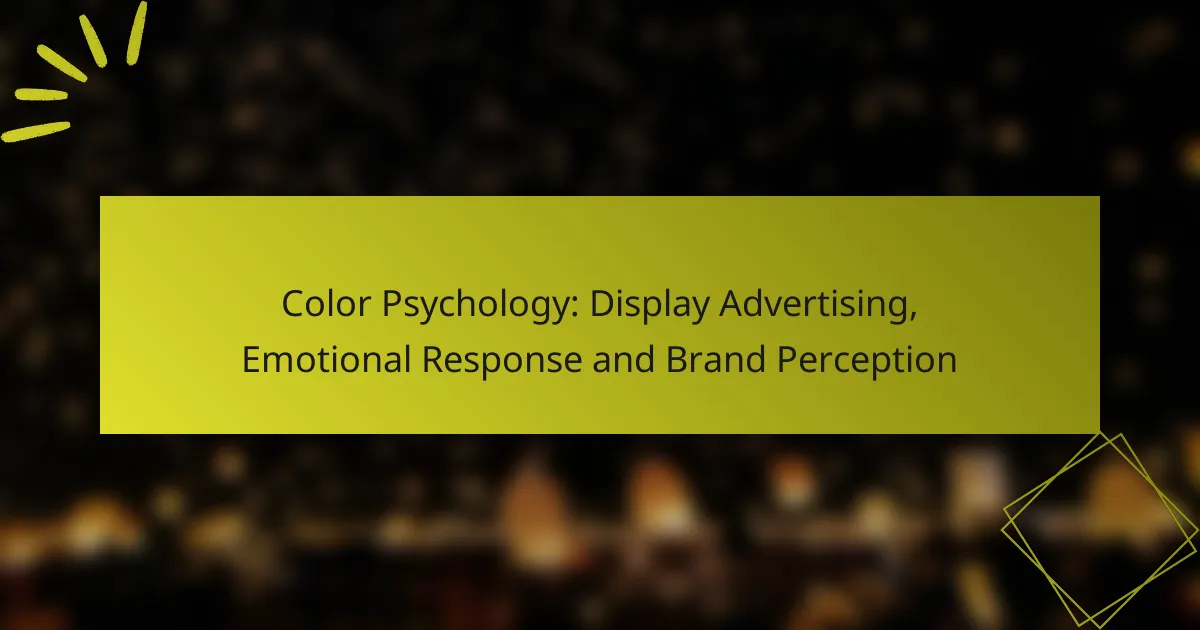Compelling calls to action (CTAs) are essential for maximizing conversion rates in display ads, as they direct users towards specific actions like making a purchase or signing up for a service. By transforming passive viewers into engaged participants, effective CTAs not only enhance user interaction but also significantly boost sales and overall ad performance.

How can compelling calls to action improve conversion rates in display ads?
Compelling calls to action (CTAs) significantly enhance conversion rates in display ads by clearly guiding users on the next steps they should take. Effective CTAs can transform passive viewers into active participants, ultimately driving higher engagement and sales.
Clear messaging increases engagement
Clear messaging in display ads ensures that users immediately understand the value proposition. When the CTA is straightforward, such as “Shop Now” or “Get Your Free Trial,” it reduces confusion and encourages users to click. Avoid jargon and keep the language simple to maximize clarity.
Consider using concise phrases that directly relate to the product or service being advertised. For example, instead of a vague “Learn More,” use “Discover Our Best-Selling Products” to create a more engaging experience.
Urgency prompts immediate action
Creating a sense of urgency in your CTAs can significantly boost conversion rates. Phrases like “Limited Time Offer” or “Only a Few Left!” encourage users to act quickly rather than postponing their decision. This tactic can be particularly effective in promotions or seasonal sales.
Incorporating countdown timers or specific deadlines in your ads can further enhance this urgency. For instance, stating “Sale Ends in 24 Hours” can compel users to make a purchase sooner rather than later.
Personalization enhances relevance
Personalized CTAs resonate more with users, making them feel valued and understood. Tailoring your messaging based on user behavior, demographics, or past interactions can significantly increase engagement. For example, using “Welcome Back, [Name]! Check Out Your Recommendations” can create a more inviting experience.
Utilizing data analytics to segment your audience allows you to craft CTAs that speak directly to their interests. This relevance not only boosts click-through rates but also fosters loyalty and repeat visits.
Visual appeal captures attention
The visual design of your display ads plays a crucial role in attracting users. A well-designed CTA button should stand out from the rest of the ad, using contrasting colors and clear fonts. For instance, a bright orange button on a blue background can draw the eye effectively.
Incorporating images or icons that relate to the CTA can also enhance visual appeal. For example, a shopping cart icon next to “Buy Now” can reinforce the action you want users to take, making the ad more intuitive.
A/B testing optimizes performance
A/B testing is essential for optimizing CTAs in display ads. By comparing two variations of an ad, you can determine which CTA performs better. Test different wording, colors, and placements to see what resonates most with your audience.
Implementing A/B tests regularly allows you to refine your approach based on real user data. Start with small changes and gradually scale up to more significant adjustments, ensuring that you are continually improving your conversion rates.

What are effective examples of calls to action in display advertising?
Effective calls to action (CTAs) in display advertising are crucial for driving user engagement and conversions. These CTAs prompt users to take specific actions, such as making a purchase or signing up for a service, and can significantly impact conversion rates.
Shop Now button
The “Shop Now” button is a straightforward and powerful CTA that encourages immediate purchases. It creates a sense of urgency and directs users to product pages where they can complete transactions quickly. For optimal effectiveness, ensure the button is prominently placed and visually distinct within the ad.
Consider using contrasting colors and clear fonts to make the “Shop Now” button stand out. Including limited-time offers alongside this CTA can further enhance its appeal, motivating users to act without delay.
Sign Up for Free Trial
“Sign Up for Free Trial” is an enticing CTA that allows potential customers to experience a product or service without financial commitment. This approach reduces barriers to entry and can lead to higher conversion rates as users explore the offering firsthand.
To maximize effectiveness, clearly outline what users will gain from the trial and any limitations, such as duration or features. Highlighting success stories or testimonials can also build trust and encourage sign-ups.
Learn More about Our Services
The “Learn More about Our Services” CTA invites users to delve deeper into what you offer, making it ideal for complex products or services. This approach is particularly effective when users may need additional information before making a decision.
Ensure that the landing page linked to this CTA provides comprehensive details, including benefits, pricing, and FAQs. Use engaging visuals and concise copy to maintain user interest and facilitate understanding.
Get Your Discount Today
“Get Your Discount Today” is a compelling CTA that leverages the appeal of savings to drive conversions. By offering a discount, you create an incentive for users to take immediate action, which can significantly boost engagement rates.
To enhance this CTA’s effectiveness, clearly state the discount amount and any conditions, such as minimum purchase requirements. Incorporating a countdown timer can also instill urgency, prompting users to act quickly to secure their savings.

What metrics should be analyzed for display ad performance?
To effectively evaluate display ad performance, focus on key metrics such as click-through rate (CTR), conversion rate, return on ad spend (ROAS), and engagement rate. These metrics provide insights into how well your ads are performing and where improvements can be made.
Click-through rate (CTR)
Click-through rate (CTR) measures the percentage of users who click on your ad after seeing it. A higher CTR indicates that your ad is compelling and relevant to your target audience. Generally, a CTR of 1-3% is considered average for display ads, but this can vary based on industry and ad placement.
To improve CTR, ensure your ad copy is clear and engaging, and use strong visuals that resonate with your audience. A/B testing different headlines and images can help identify what works best.
Conversion rate
The conversion rate reflects the percentage of users who take a desired action after clicking on your ad, such as making a purchase or signing up for a newsletter. A good conversion rate typically ranges from 2-5%, depending on the industry and the effectiveness of your landing page.
To enhance conversion rates, optimize your landing pages for user experience and ensure they align with the ad’s message. Clear calls to action and minimal distractions can significantly boost conversions.
Return on ad spend (ROAS)
Return on ad spend (ROAS) measures the revenue generated for every dollar spent on advertising. A ROAS of 4:1 is often seen as a benchmark, meaning for every $1 spent, $4 in revenue is generated. This metric helps assess the profitability of your ad campaigns.
To maximize ROAS, focus on targeting the right audience and refining your ad strategy based on performance data. Regularly analyze which ads yield the highest returns and allocate more budget towards those campaigns.
Engagement rate
Engagement rate indicates how users interact with your ad beyond clicks, including likes, shares, and comments. This metric is particularly important for brand awareness campaigns, as it reflects the level of interest and connection users feel towards your brand.
To boost engagement rates, create content that encourages interaction, such as polls or questions. Engaging visuals and storytelling can also enhance user connection and increase overall engagement.

How do different industries utilize display ads for conversions?
Different industries leverage display ads to boost conversions by tailoring their messaging and offers to specific audience needs. E-commerce, travel, and education sectors each employ unique strategies to effectively engage potential customers and drive action.
E-commerce: product promotions
E-commerce businesses often utilize display ads to showcase product promotions, discounts, and seasonal sales. By featuring eye-catching visuals and compelling offers, these ads can entice users to click through to product pages and complete purchases.
To maximize effectiveness, e-commerce brands should focus on high-quality images and clear calls to action, such as “Shop Now” or “Limited Time Offer.” Retargeting ads can also be beneficial, reminding users of items they viewed but did not purchase.
Travel: booking incentives
In the travel industry, display ads frequently highlight booking incentives like limited-time discounts, package deals, or exclusive offers. These ads aim to create urgency and encourage users to finalize their travel plans.
Travel companies should consider using location-specific imagery and messaging to resonate with potential travelers. Including clear calls to action, such as “Book Your Adventure Today,” can significantly enhance conversion rates.
Education: course enrollments
Educational institutions utilize display ads to promote course enrollments and special programs. These ads often emphasize the benefits of education, such as career advancement or skill development, to attract prospective students.
To improve conversion rates, educational ads should feature testimonials, course details, and clear enrollment instructions. Highlighting deadlines or limited spots can also create a sense of urgency, prompting users to take action quickly.



